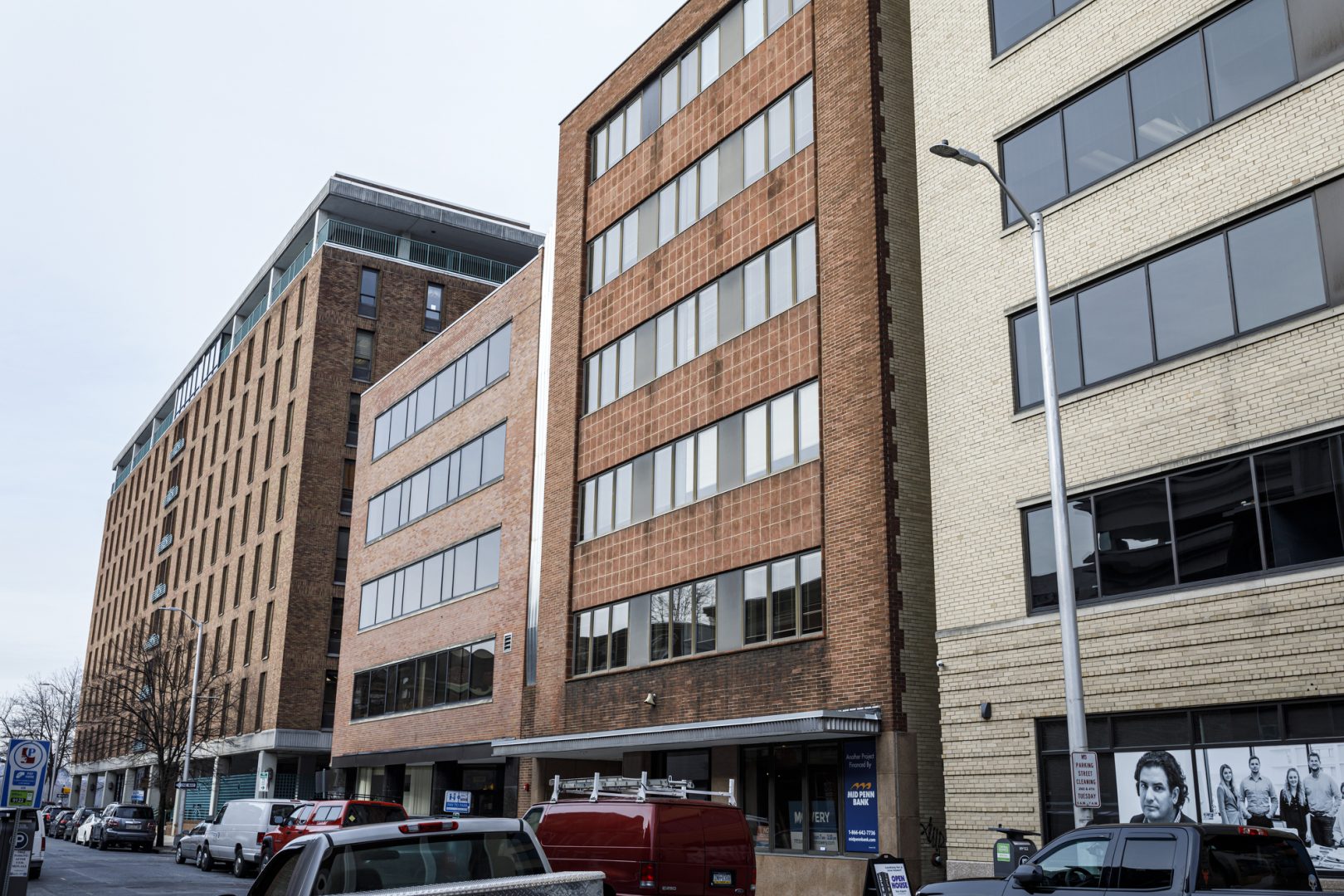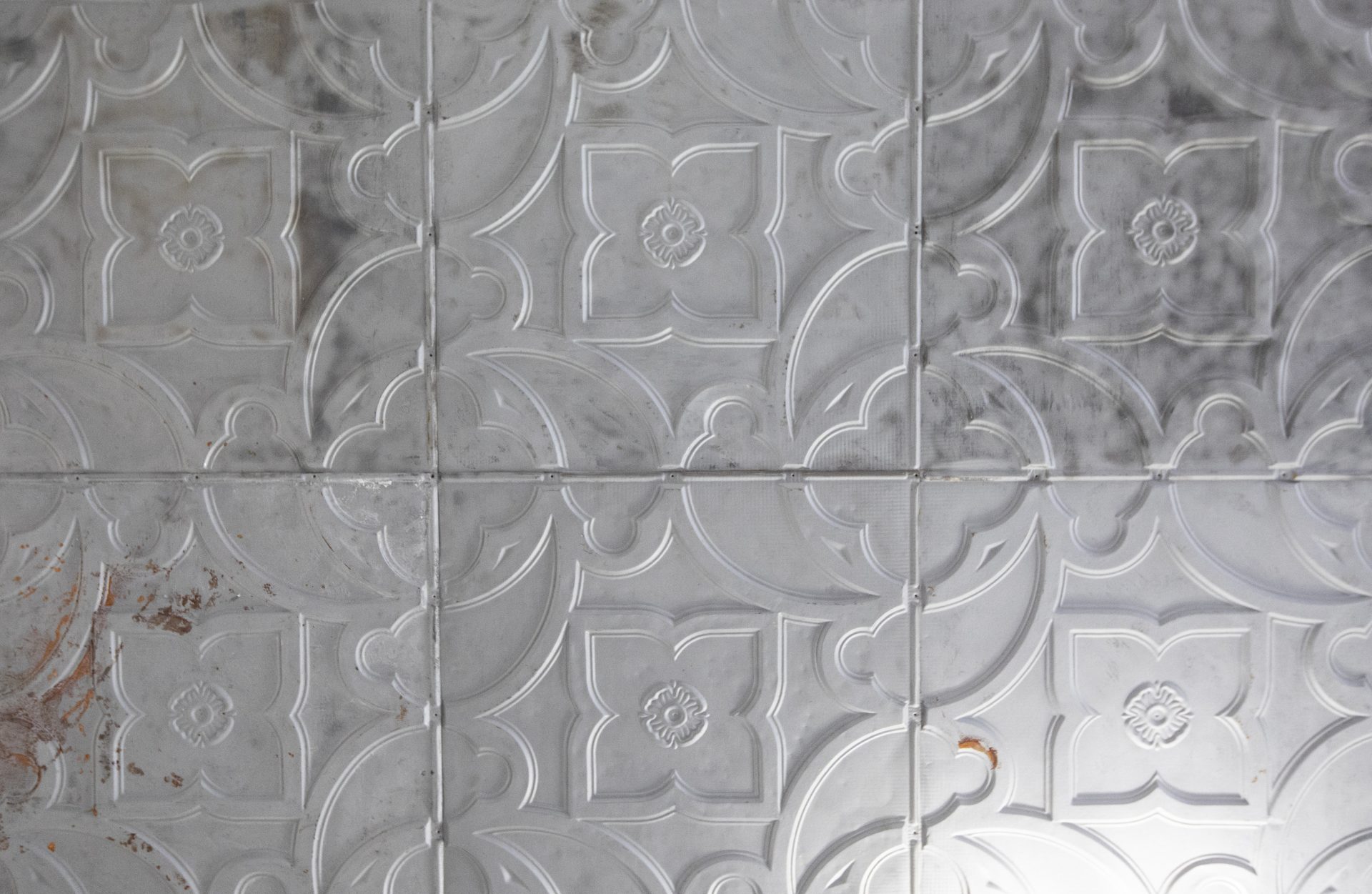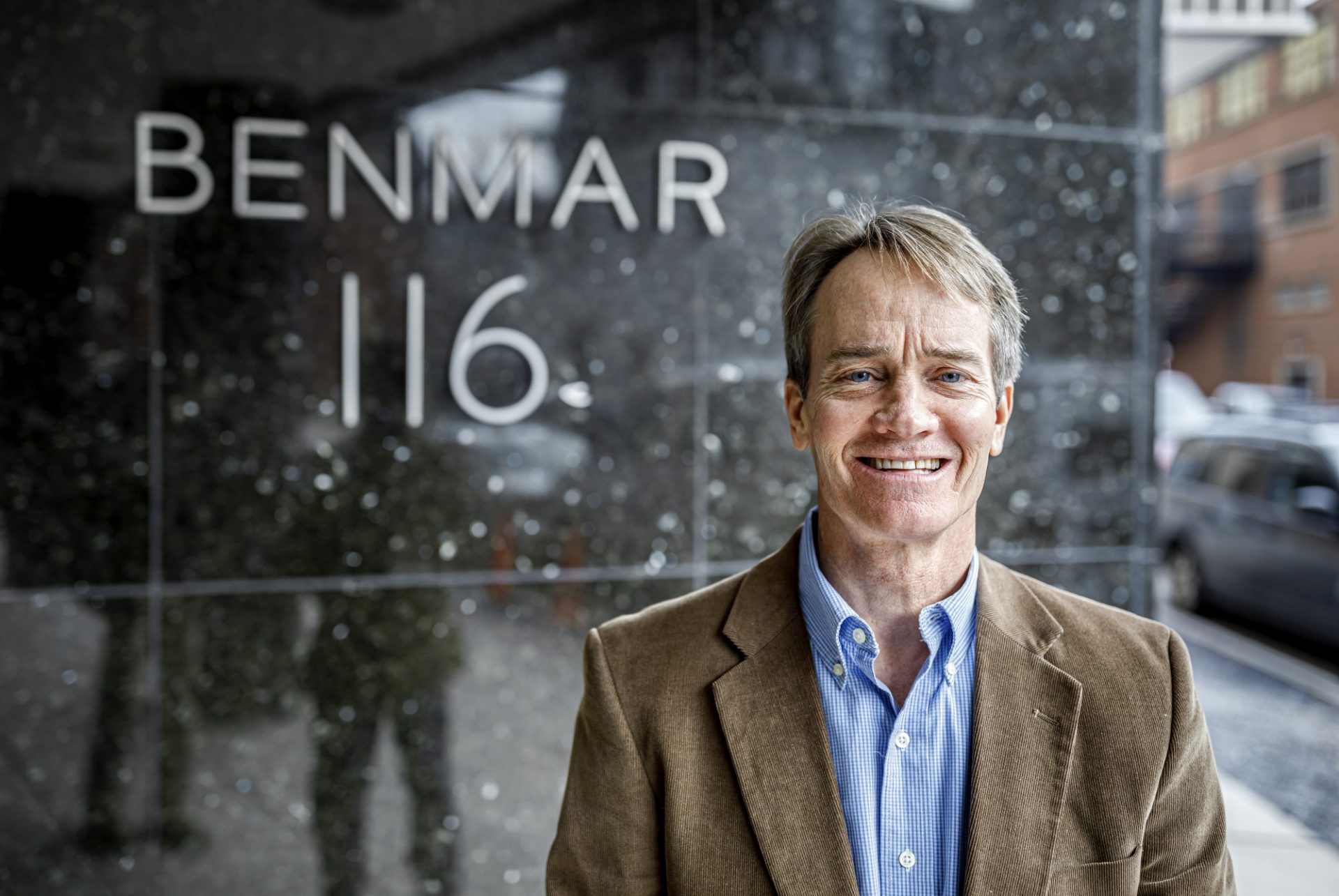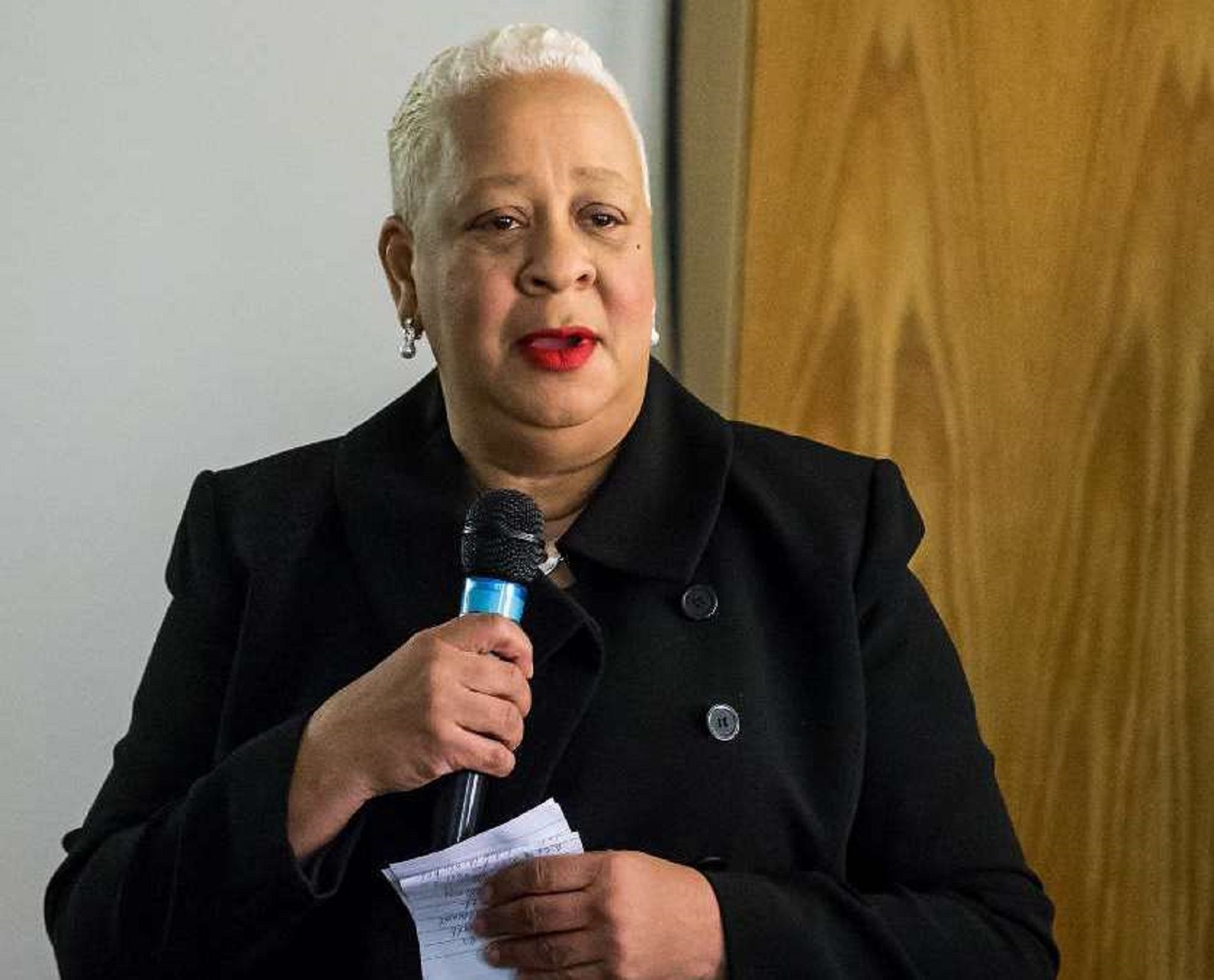
BenMar apartments, located at 116 and 124 Pine St. in Harrisburg, are seen on January 31, 2020.
Dan Gleiter / PennLive

BenMar apartments, located at 116 and 124 Pine St. in Harrisburg, are seen on January 31, 2020.
Dan Gleiter / PennLive

Dan Gleiter / PennLive
BenMar apartments, located at 116 and 124 Pine St. in Harrisburg, are seen on January 31, 2020.
(Harrisburg) — Victoria McCallum said she’s witnessed the transformation of a neighborhood — one that’s taken place in just the few years since she bought a house in Harrisburg’s midtown neighborhood in 2014.
“Midtown was not what it is right now,” she said. “It’s kind of ridiculous how quickly everything just popped up.”
McCallum arrived back when the Broad Street Market boasted more vacant space than vendors; before local barbershops went out of business and trendy breweries and restaurants moved in, she said.
Those new businesses, she said, are designed to serve a new clientele: young people drawn to the neighborhood for its urban setting, walkability and sense of community. And those people have moved in, McCallum said, leaving questions about where the previous residents have gone.
“Midtown has already been gentrified,” she said. “It’s been developed to the point where people can no longer afford to rent here that have lived here their whole lives.”
McCallum spoke in the days after City Council President Wanda Williams took aim at local developers who, over the past few years, have created hundreds of new apartments in the city. Most of them rent for more than $1,000 per month, a price Williams said far exceeds the budget of Harrisburg’s low-income population.
“To me, it appears that this is a form of gentrification,” Williams said chastising developer Brad Jones, President and CEO of Harristown Enterprises Inc. last month.
It’s a notion that Jones disputes, saying he’s creating new units, not replacing existing housing.
Even so, the overwhelming need for public housing is something that cannot be overlooked, said Catherine Wyatt, the Harrisburg Housing authority’s staff counsel and public information officer.

Once every two years, for two days, Harrisburg Housing Authority opens its housing voucher program to new applicants.
It’s a program that offers government dollars to offset the cost of rent for low-income residents seeking a home in the city. During past enrollment periods, as many as 3,000 applicants have submitted their names.
That’s more than twice the number of renters — 1,196 — enrolled in the voucher program, Wyatt said. Another 600 approved applicants are on a waiting list.
She pointed out that the city’s public housing program is in equally high demand. The authority’s 1,500 available units are about 97 percent full, with a waiting list of more than 830 prospective tenants.
That’s not the demographic that Jones and his business partners are looking to serve, he said during an appearance before the PennLive editorial board earlier this month. Rather it’s their “mission to redevelop downtown.”
“We said, ‘Look, we want to make the downtown a more livable place,’” Jones said, and over the past five years, Harristown has had direct involvement in creating about 150 downtown apartment units. “We imagined downtown as a place where people really wanted to live.”
Jones said he expects those projects to include units of a certain quality. His company, by far, isn’t the only housing developer operating in the city.
“We are trying to really create a product that people have told us they want,” Jones said. “They want what they see on HGTV. They want their own full-size washer and dryer; they want stainless-steel appliances; they want nice finishes.”

Dan Gleiter / PennLive
Bradley Jones, CEO of Harristown Enterprises, poses for a portrait outside BenMar apartment building at 116 Pine St. in Harrisburg on January 31, 2020.
So Jones said that’s what he’s tried to create, and despite his best efforts, he could not figure out a way to incorporate affordable-housing units into those projects in a way that will make them profitable and serve investors.
There are companies building affordable housing units in the region but at a much slower pace than construction of market-rate units, experts have said.
While his buildings are not serving a low-income population, Jones points out that they are supplementing, not replacing, existing affordable housing options. In fact, he said, they are revitalizing unused and underused office buildings, making them attractive to incoming renters who will spend money in, and contribute tax dollars to, the city. That’s revenue that could be spent to serve the low-income residents Williams and other council members are worried about, he said.
“This is not gentrification,” Jones said.
Harrisburg Mayor Eric Papenfuse takes the same position.
But the issue is a bit more nuanced, according to Claudia Aiken, a research associate at the University of Pennsylvania’s PennPraxia, which focuses on community design.
“It does not necessarily matter where new apartments are built,” she said. “Even if they don’t directly replace low-cost units, they may attract amenities that cater to higher-income groups, attract more high-income home seekers — raising neighboring property values and leading to higher rents, property taxes, and home sales prices.”

Vicki Vellios Briner / Special to PennLive
City Council President Wanda Williams speaking on Sunday, February 18, 2018.
All of that discussion took place in the days after Jones appeared before city council in late January to request — and receive — permission to redevelop an old 30,000-square-foot apartment building at 17 South Second Street into 30 residential units. He expects the apartments will rent for a monthly price between $1,100 and $1,400 per month.
Those prices are in line with what’s expected for a downtown luxury apartment, said Jordan Piscioneri, president of the Greater Harrisburg Association of Realtors.
“Compared to a lot of the larger cities, it’s nothing,” he said.
Still, Piscioneri said the prices are higher than those charged by him and his colleagues at Camp Hill-based Century 21 Realty Sevices, which owns rental space across the region.
The additional 30 apartments in downtown Harrisburg, will bring Harristown’s total unit count above 180, a number Jones said doesn’t even come close to meeting the demand of renters, mostly young professionals, looking for downtown living spaces.
Last year, inquiries about available Harristown apartments were made by prospective tenants at a rate of 31 per week, Jones said. Piscioneri, whose real estate company covers a region that extends beyond the city, recorded a rate of 26 inquiries a day.
Rental activity, Piscioneri said, has been trending upward for about two years. In part, that’s true because people looking to move to the area, often for work, are finding it increasingly difficult to find homes available for sale, he said. Unable to purchase, those people often are left with no other option than to rent, he said.
“The real problem I think is inventory and the available housing stock in our region,” Piscioneri said. “There really are no new homes available, so you are relying on the resale market,” he said. “New construction really drives everything that we do. … You have more households being formed than new homes being created on the market.”
Dauphin County 2019 Fourth … by Sean Sauro on Scribd
And sale prices in the city typically are lower than in surrounding municipalities by tens of thousands of dollars. Those low prices make city homes attractive to first-time buyers, as well as people who buy old and rundown properties to fix up and sell for a profit, Piscioneri said.
“Eventually, that will have an impact,” Piscioneri said, guessing that if the trend continues housing prices will increase, making it more difficult for people to afford city living.
Affordability issues won’t only exist in trendy areas such as downtown and midtown, Piscioneri guessed, but also in traditionally low-income spaces. He mentioned specifically Allison Hill, where he said property speculators already are making “strategic investments in that area because they know it’s going to be getting better.”
That’s true despite ongoing financial and academic failings of the Harrisburg School District that may deter some people from moving into the city, Piscioneri said.
“I think when you look at the demographics of who is doing the purchasing and the moving, I don’t think there are as many families or children involved in the situation,” Piscioneri said.

Dan Gleiter / PennLive
BenMar apartments are at 116 and 124 Pine St. in Harrisburg. Photo taken January 31, 2020.
There have been signs of similar changes in other parts of the city like uptown, said McCallum, the Harrisburg transplant and president of Na’Toria Marketing & Design Solutions LLC.
Understandably, low-income and longtime residents feel threatened, she said, pointing out that it’s a demographic overwhelmingly comprised of people of color. McCallum said she’s worked closely with the Harrisburg Black Young Professionals.
“I think everyone is having a different experience,” McCallum said. “A lot of natives, especially those who own property, are very happy that all of these developments are happening because, of course, they are going to be able to keep their properties rented.”
But make no mistake, she said, the new $1,000-plus apartments are not designed for the average Harrisburg resident. Instead, they’ll benefit developers and investors who build them, as well as the white-collar professionals moving in, she said.
“But what about the people who have been here trying to look for housing? That’s why people are upset,” she said.
Williams has those people in mind, and last month, she said she’s going to make it a priority to pursue legislation that could force developers to set aside a percentage of newly developed units as affordable housing.
“You continue to overlook the populations that are most affected by housing blight in this city,” she told Jones.
PennLive and The Patriot-News are partners with PA Post.

Sometimes, your mornings are just too busy to catch the news beyond a headline or two. Don’t worry. The Morning Agenda has got your back. Each weekday morning, host Tim Lambert will keep you informed, amused, enlightened and up-to-date on what’s happening in central Pennsylvania and the rest of this great commonwealth.
The days of journalism’s one-way street of simply producing stories for the public have long been over. Now, it’s time to find better ways to interact with you and ensure we meet your high standards of what a credible media organization should be.